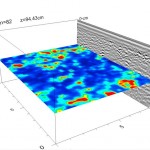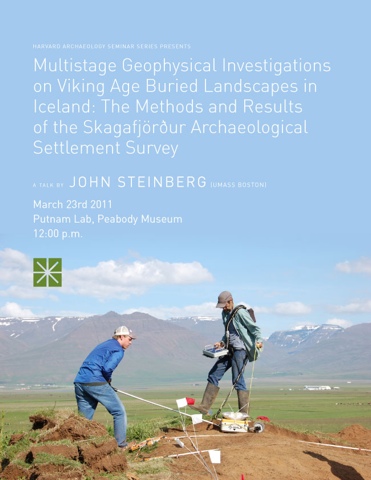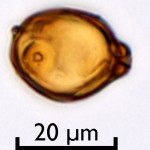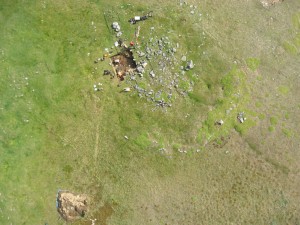August 4, 2010
by sass
1 Comment
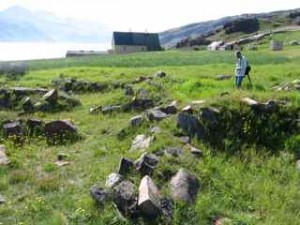
After two straight days of travel – a flight from Boston Logan Airport to Keflavik in Iceland, a bus ride to the domestic airport in Reykjavik, then another plane to the airport in Narsarsuaq, Greenland – we had a full day to rest up before heading into the field with the team from the National Museum of Denmark. To orient ourselves to the landscape of Greenland, we spent the day on the other side of Tunilliarfik (Eiriksfjord) in the settlement of Qassiarsuk, known in the sagas as Brattahlid – the Greenland home of Eirik the Red.
Qassiarsuk is a splash of primary colors against a background of green. The brightly painted buildings – a store, a hostel, a church, a school, and farmhouses – are spread along a stretch of one of the longest and busiest roads in southern Greenland. Norse (and Inuit) ruins dot the hillsides and the coast, rocky foundations of stables, fences, and longhouses all under the watchful eye of Leif Eiriksson, whose statue is set high on a rock above the settlement.
From our experience with Viking architecture in Iceland, we can tell that most of the visible ruins appear to be medieval, that is, they date to the last century or two of the Norse settlement. For example, one dwelling has a plan with a central hallway, characteristic of houses built after about 1300 AD. Earlier structures, which may have been entirely built of turf (without the rocky foundations), are generally visible only as slight hummocks in the terrain or else (presumably) remain buried beneath centuries of accumulated soil. Our survey of Qassiarsuk strengthened our suspicions that there are many unknown Viking age structures in Greenland, and with any luck the geophysical equipment we brought with us will help us find a few of them!
A day in Qassiarsuk would not be complete without a visit to the reconstructed turf longhouse and church that sit on a promontory above the iceberg-strewn fjord. The reconstruction is of course interpreted at Eirik the Red’s house, though it is likely that the nearest ruins do not in fact comprise the original Brattahlid. We noticed that turf used in the construction is as good as any in Iceland – only to learn later, from the Viking-garbed Icelandic woman who runs the museum, that because proper turf is scarce in Greenland, some of it had actually been imported from Iceland!
South Greenland has few bogs and is entirely lacking in frost heaves. Otherwise, however, the landscape is strikingly similar to what we’re familiar with in Northern Iceland – rolling green fields and pastures stretching from the coast through verdant highlands to the sheer rock faces of the mountains. On a bright and sunny summer’s day – like today – this part of Greenland would have been an inviting image of home to weary travelers from overcrowded Iceland.
Kat

